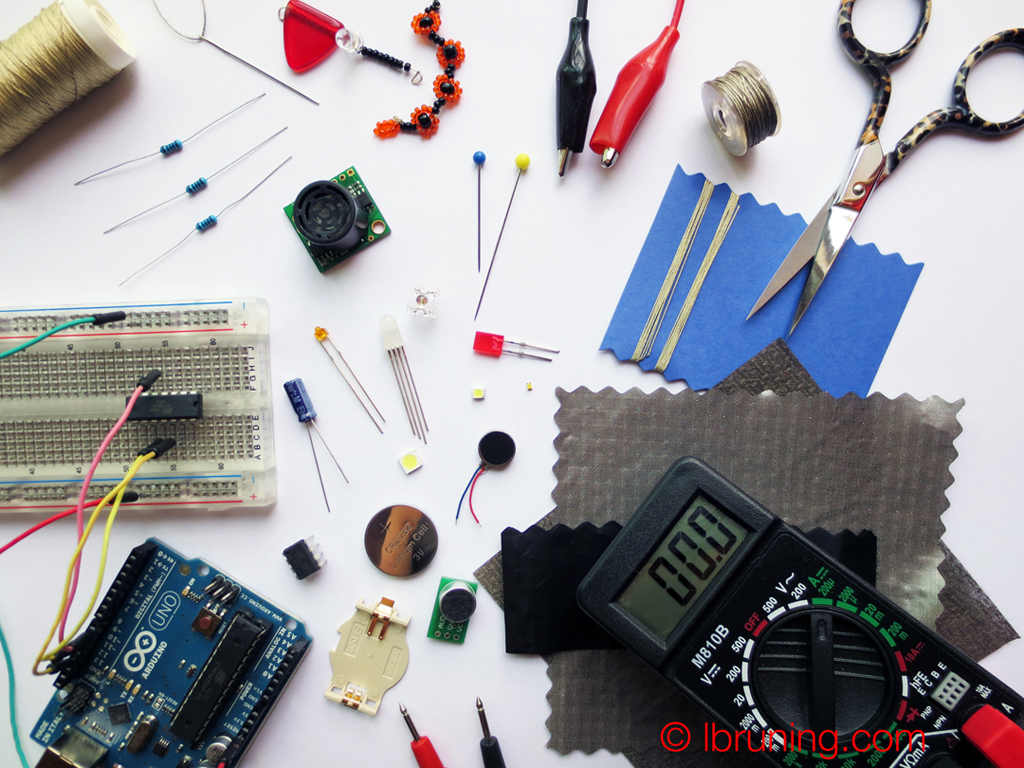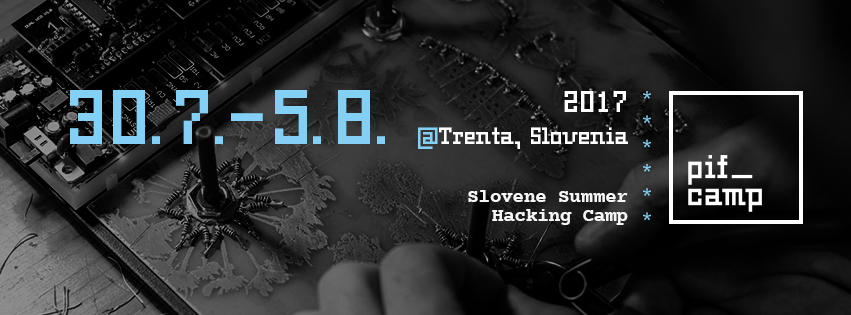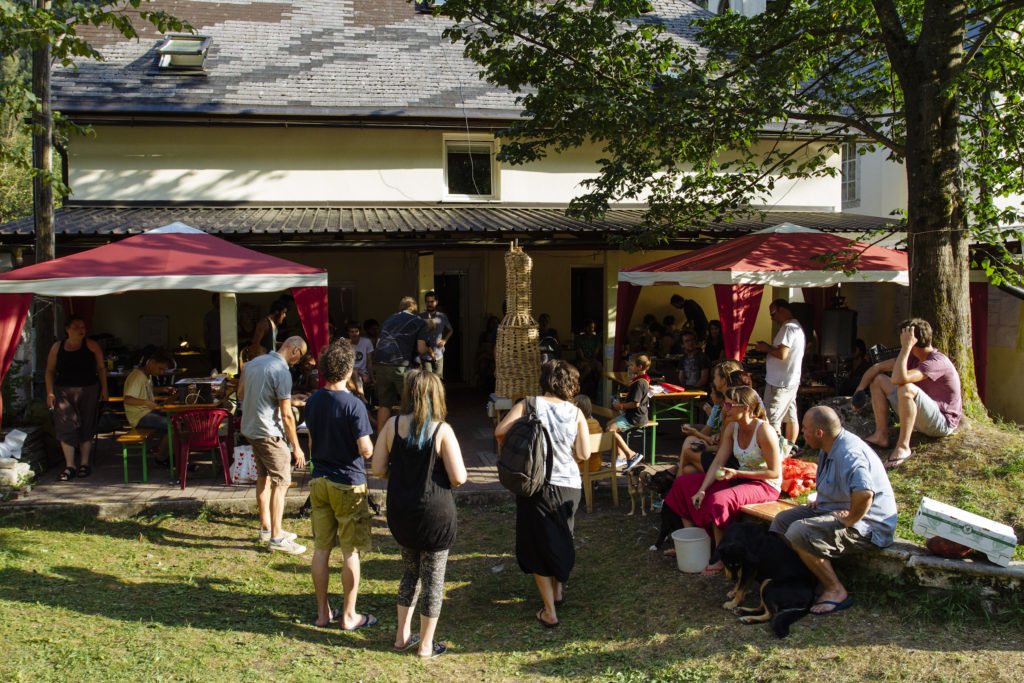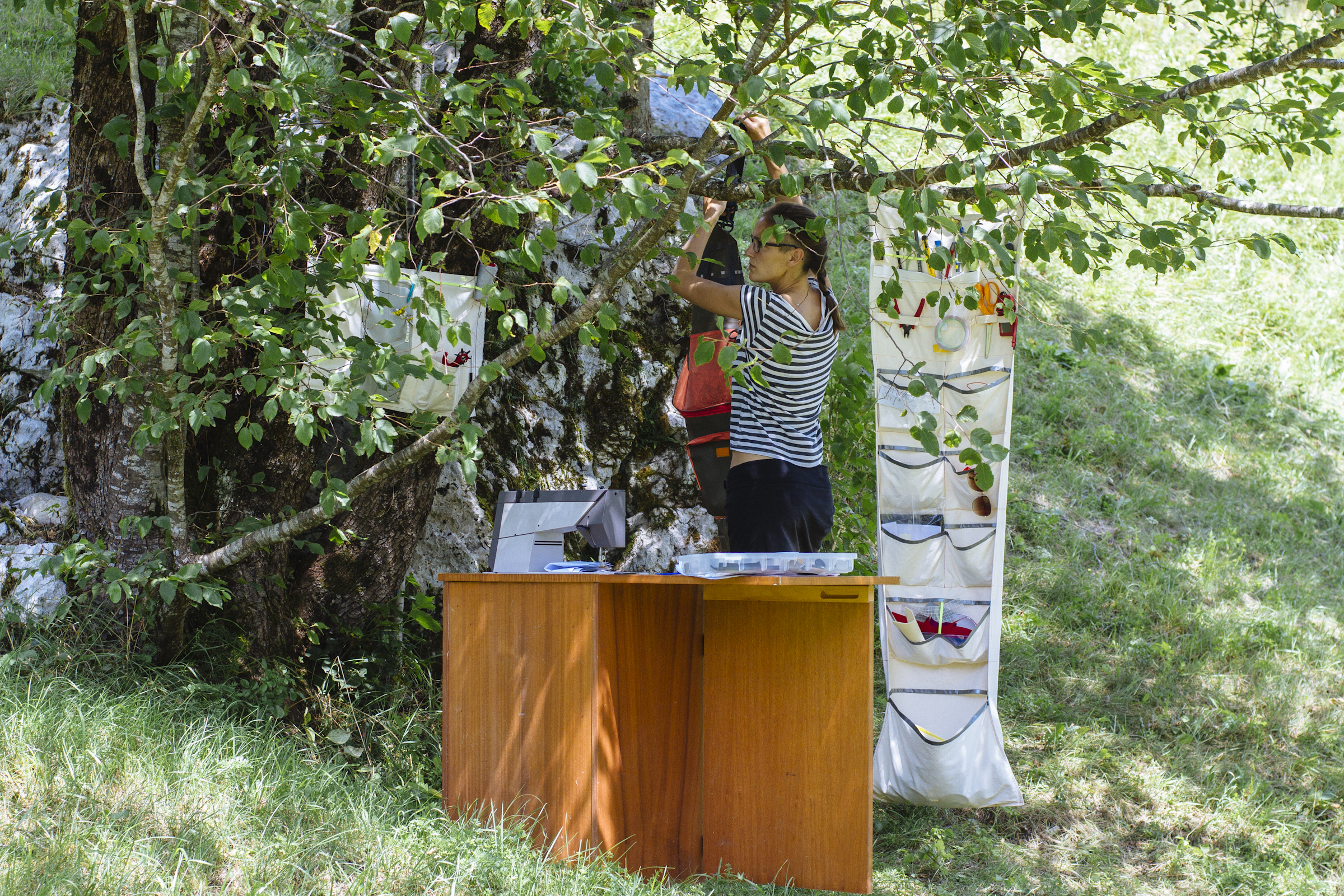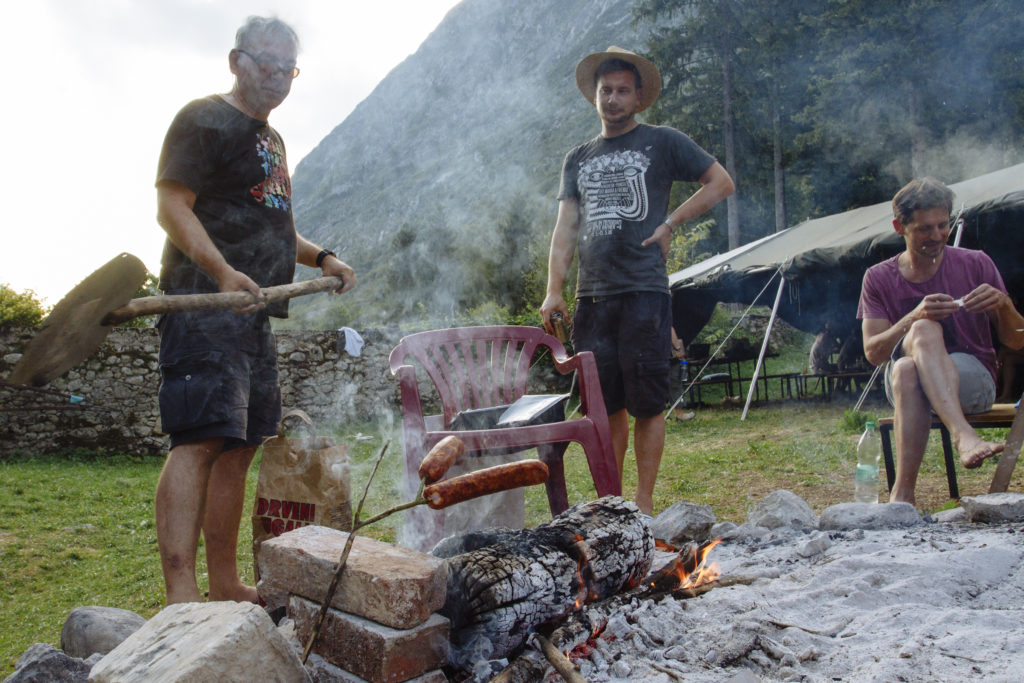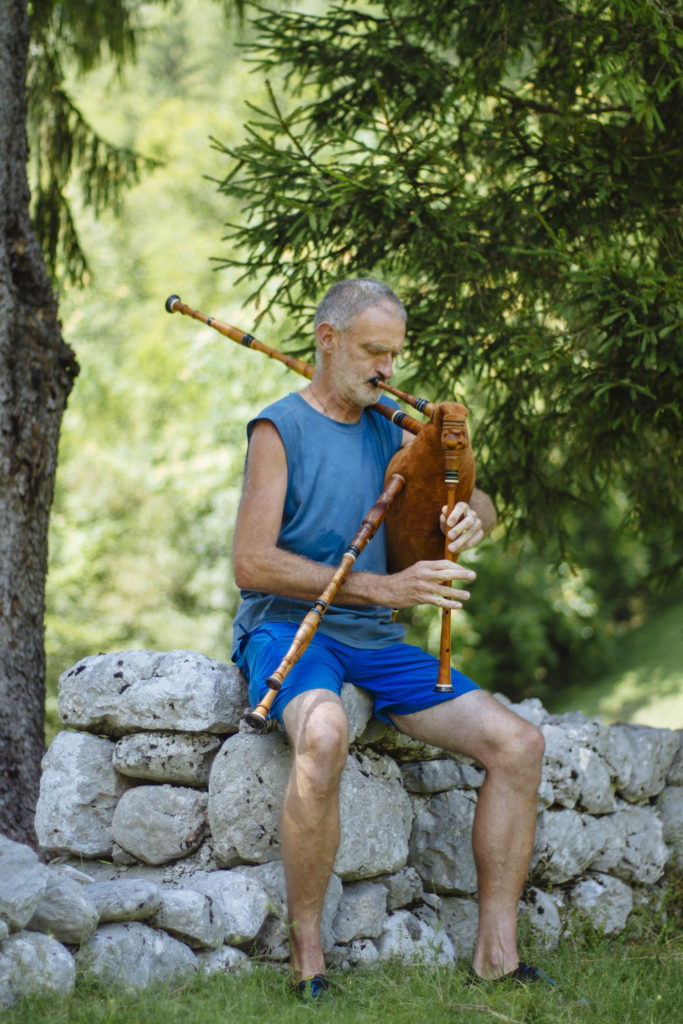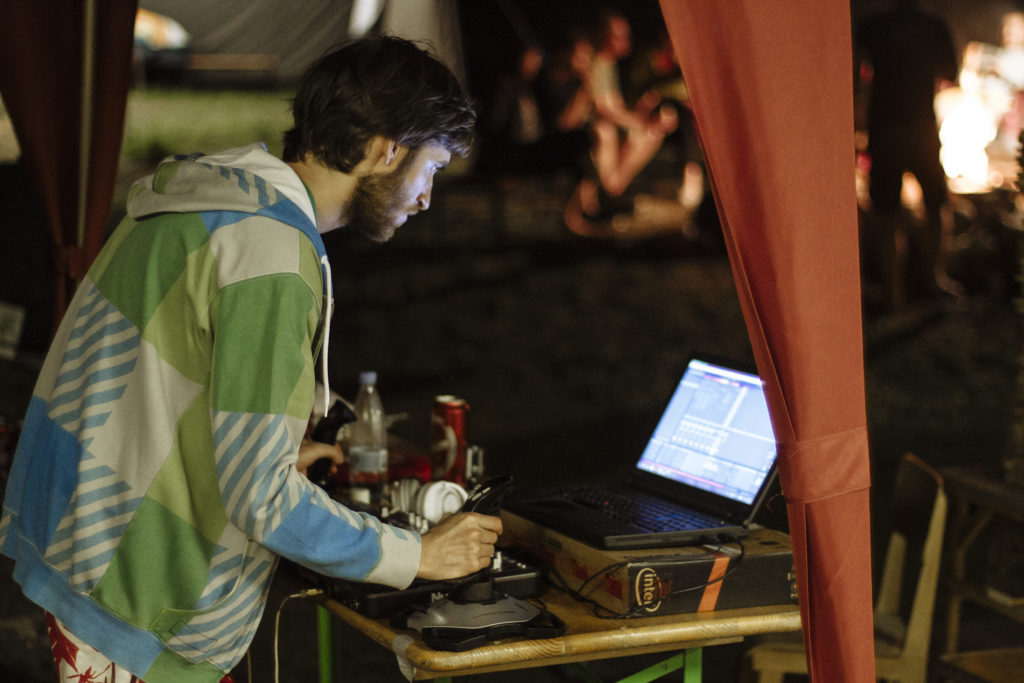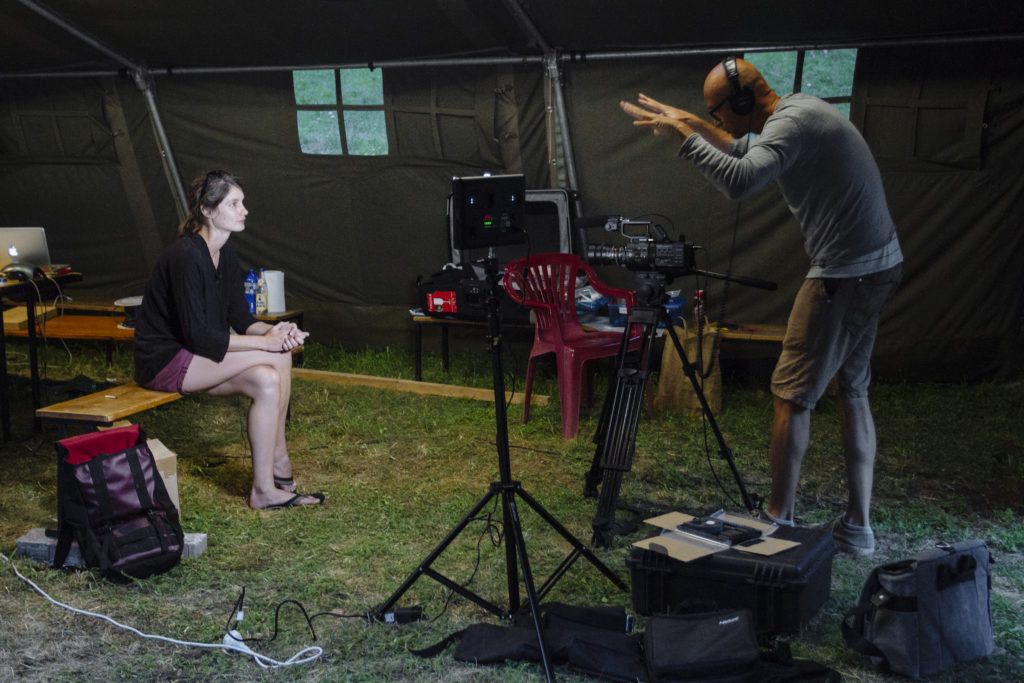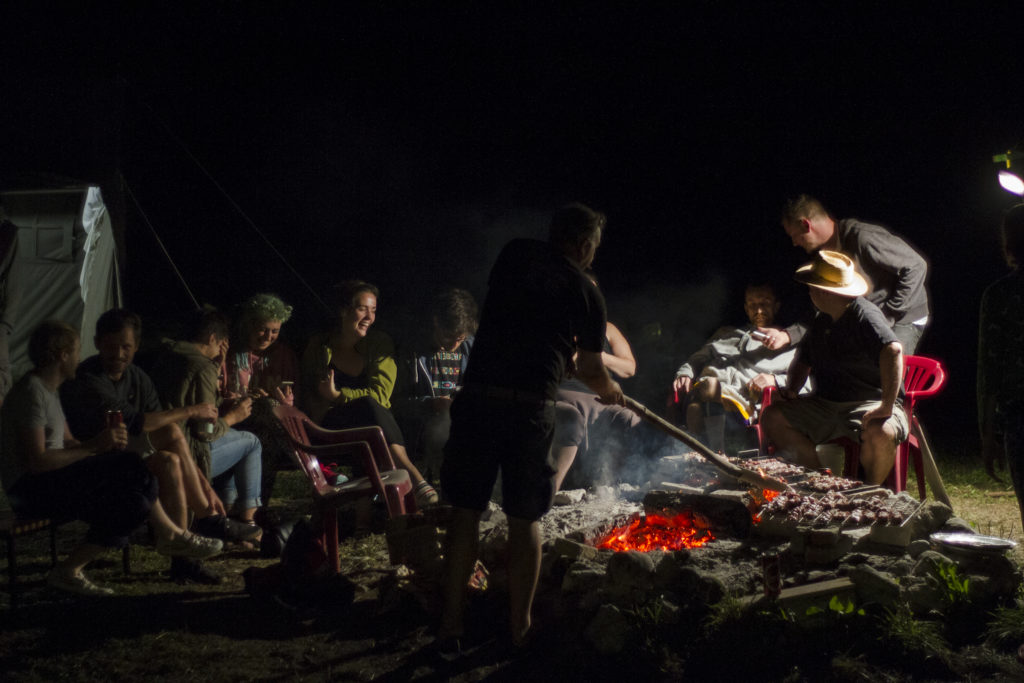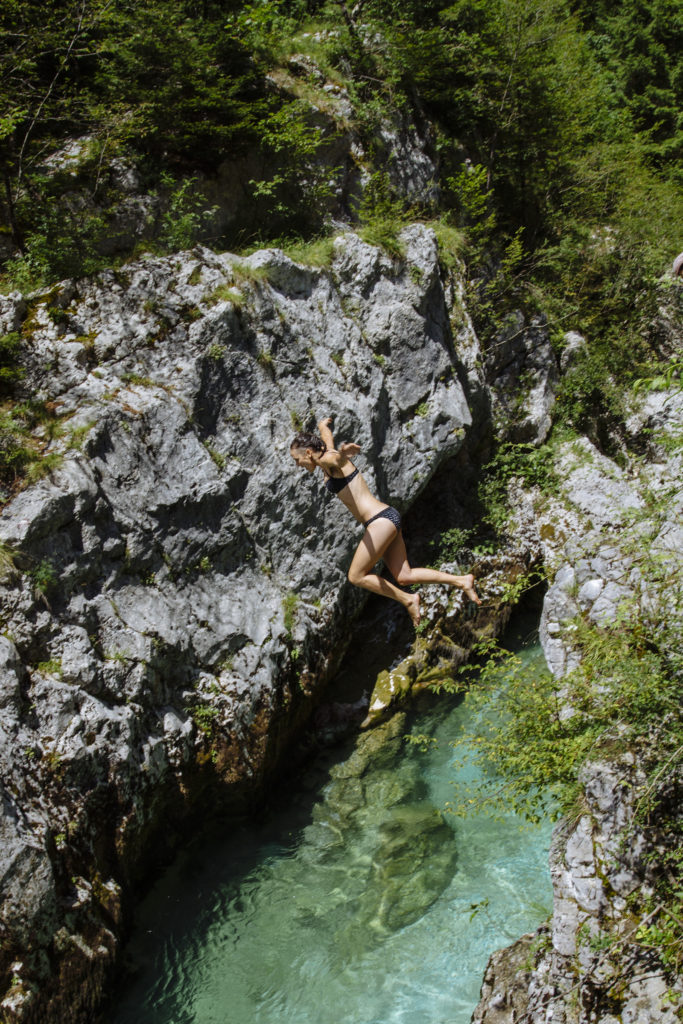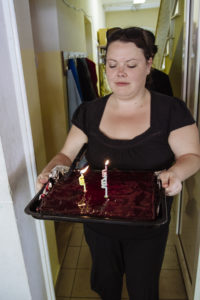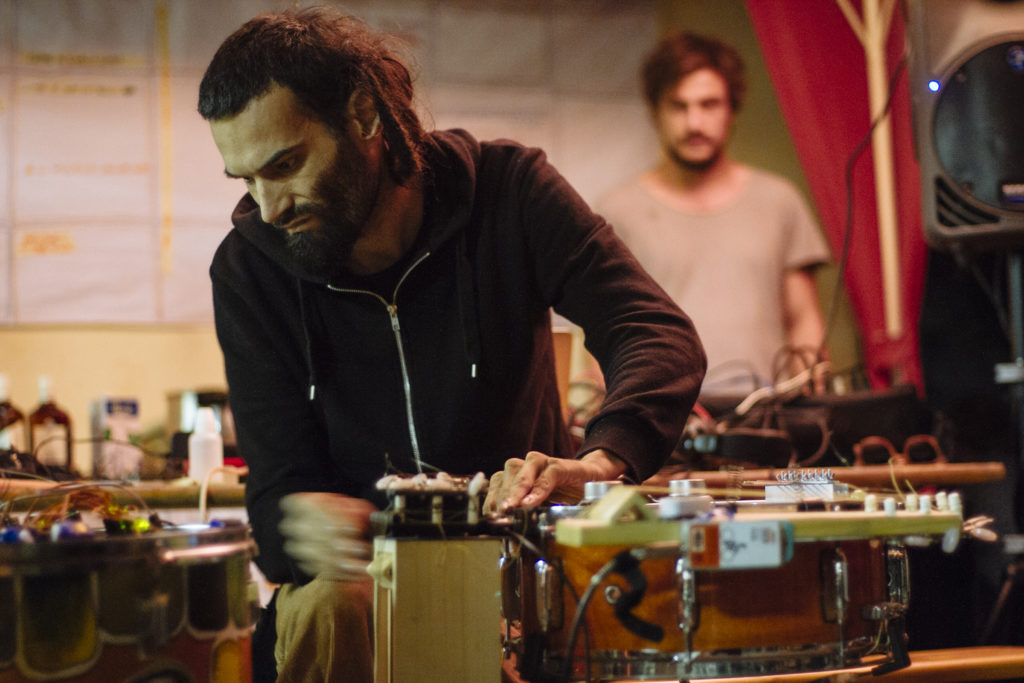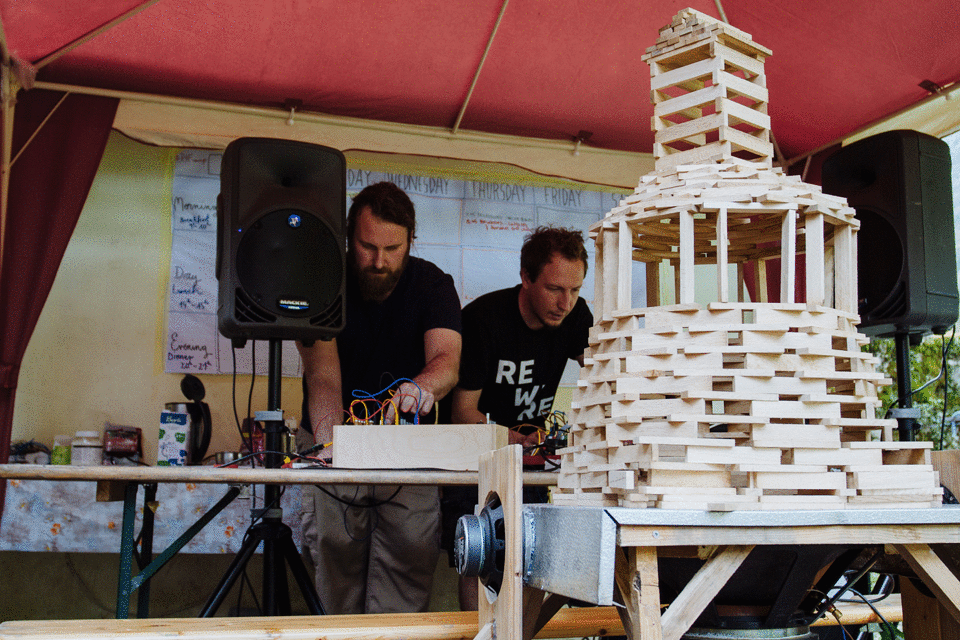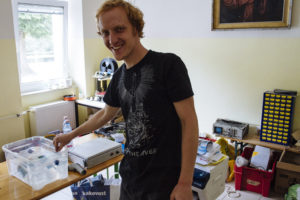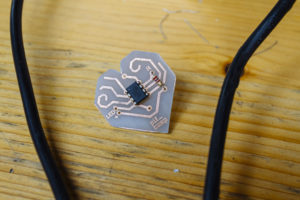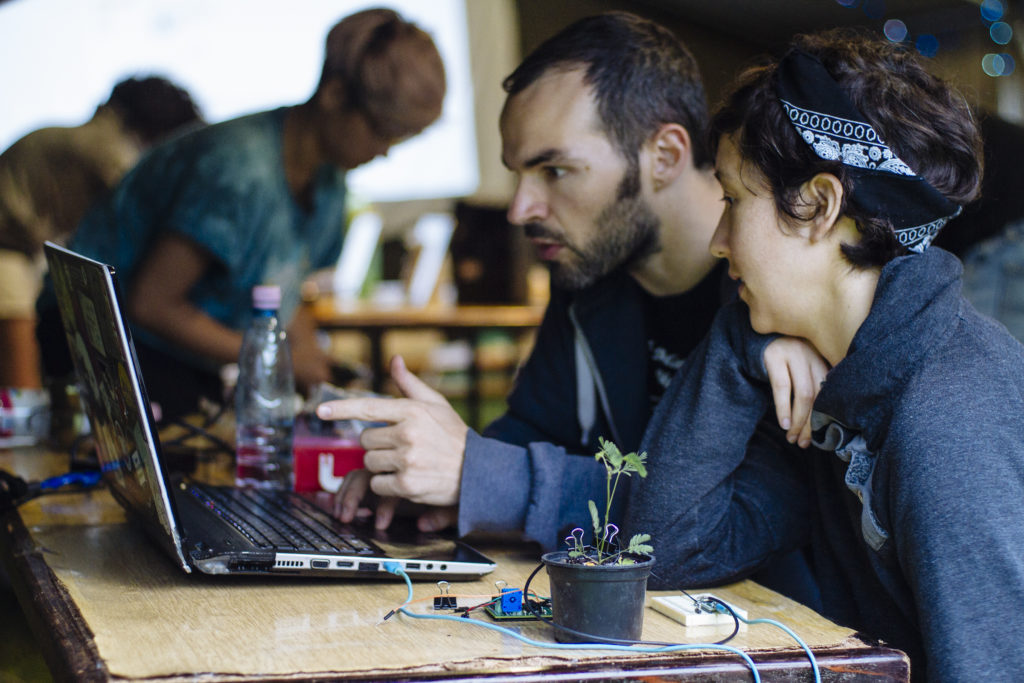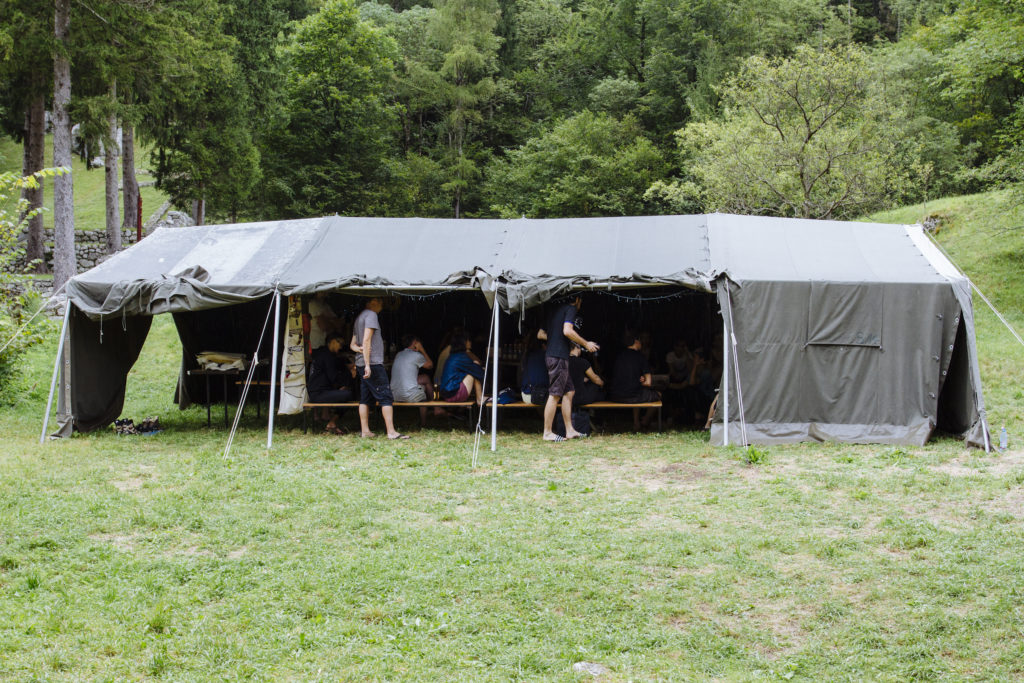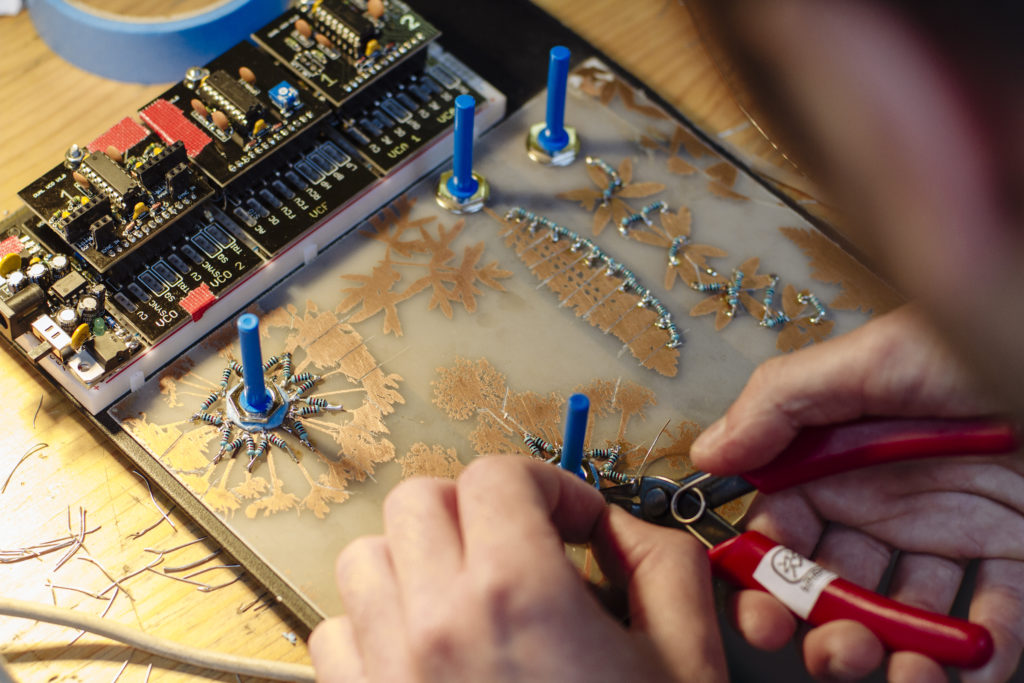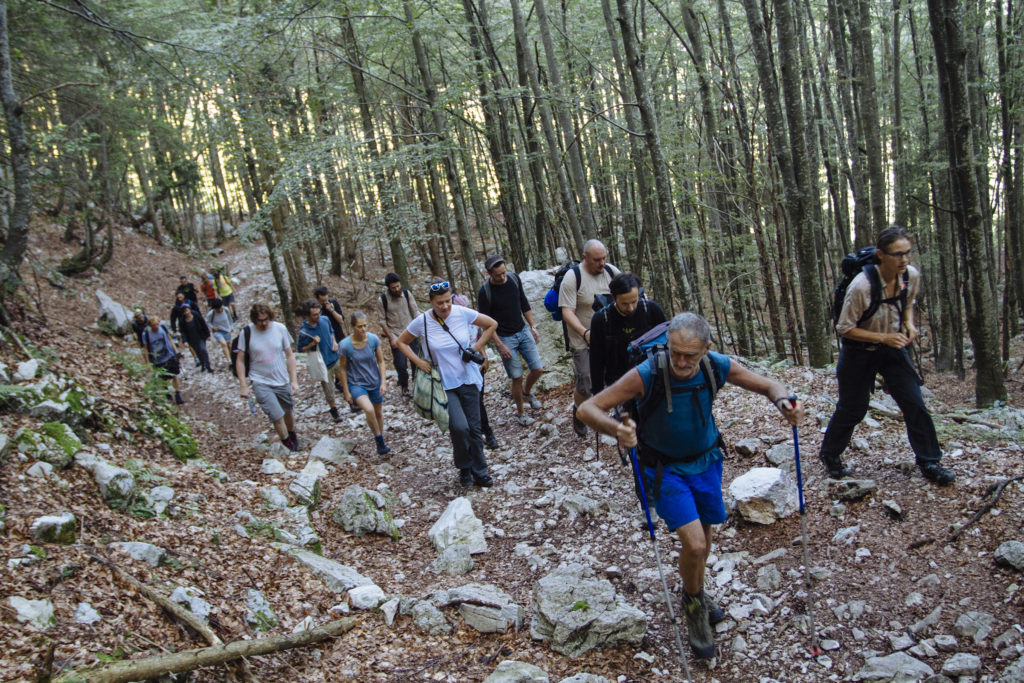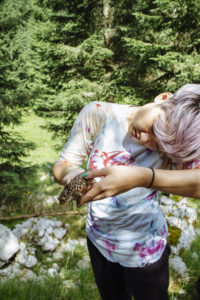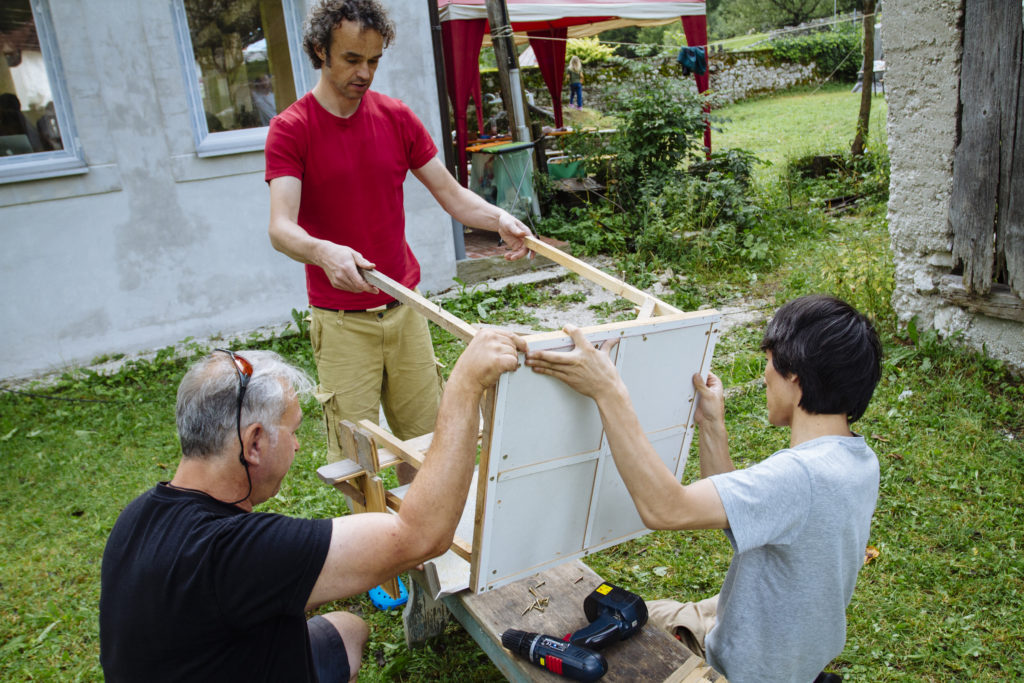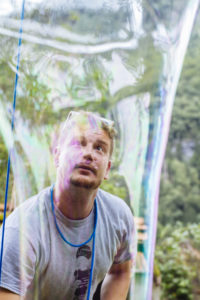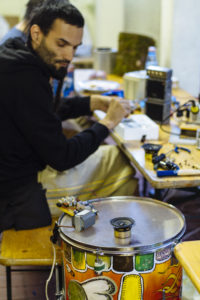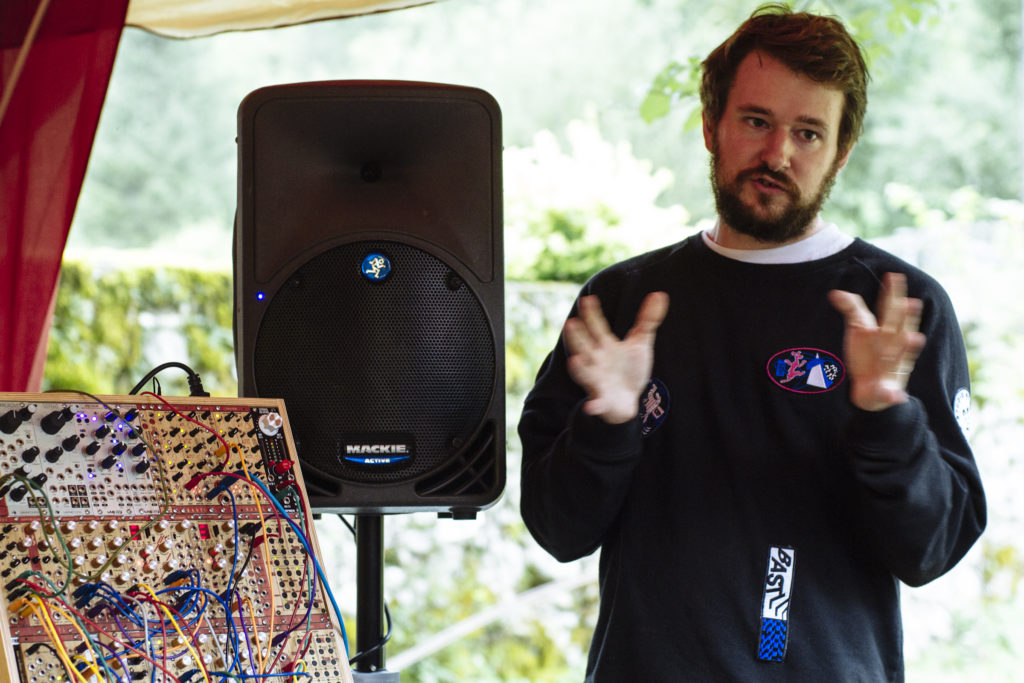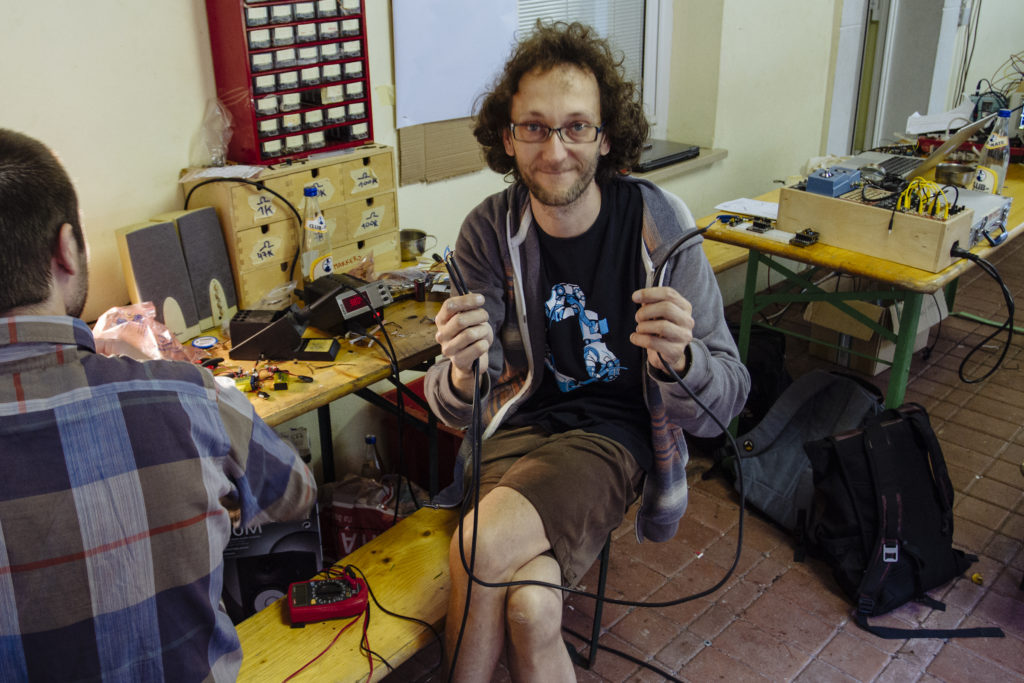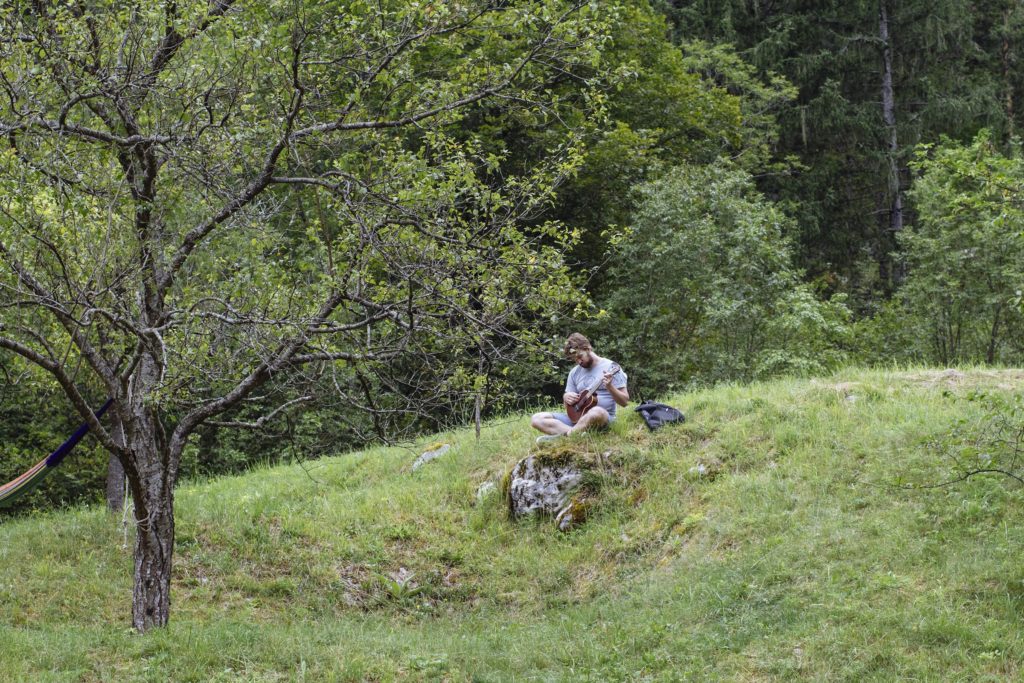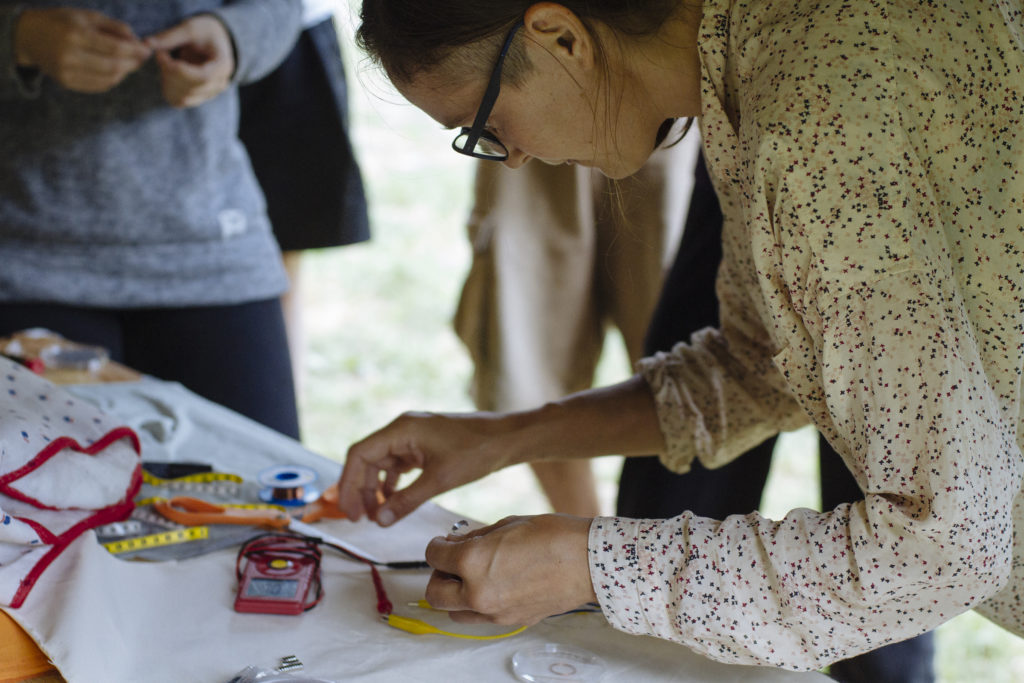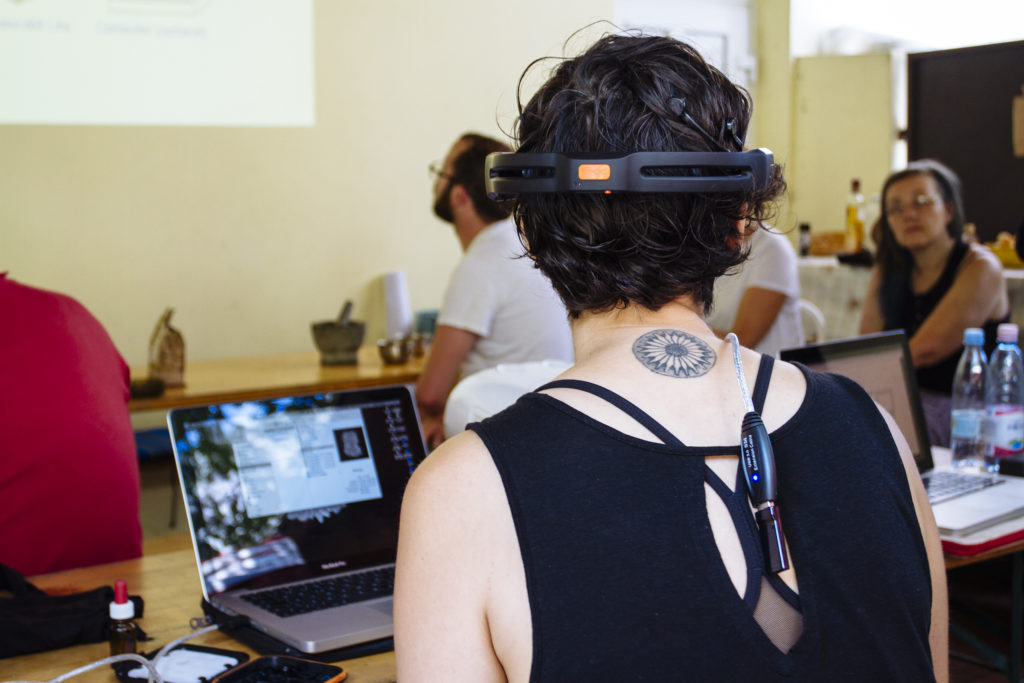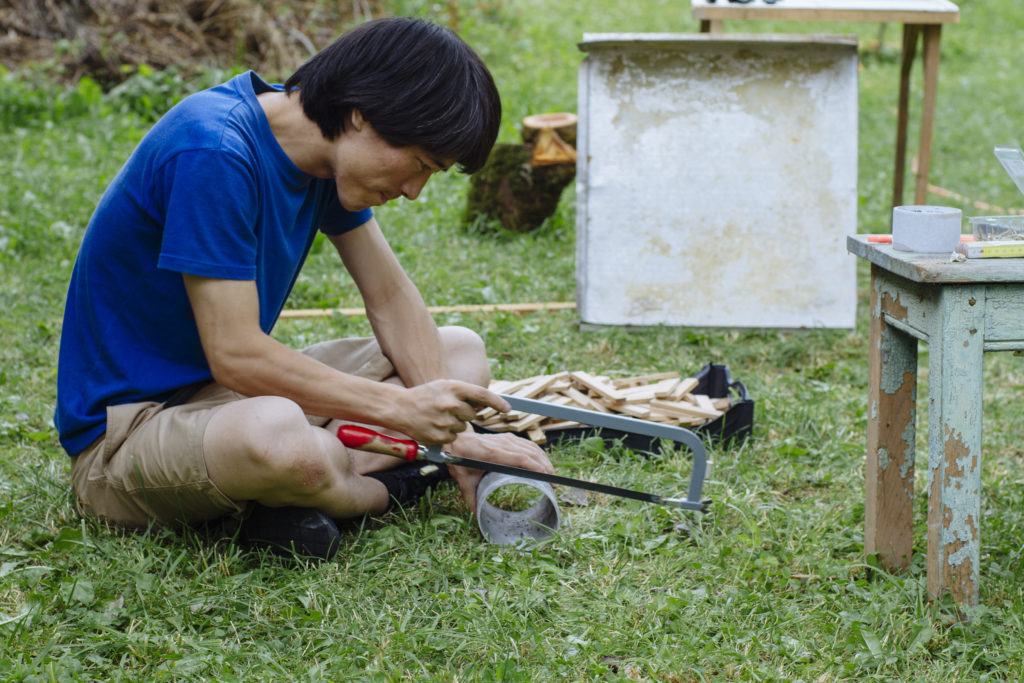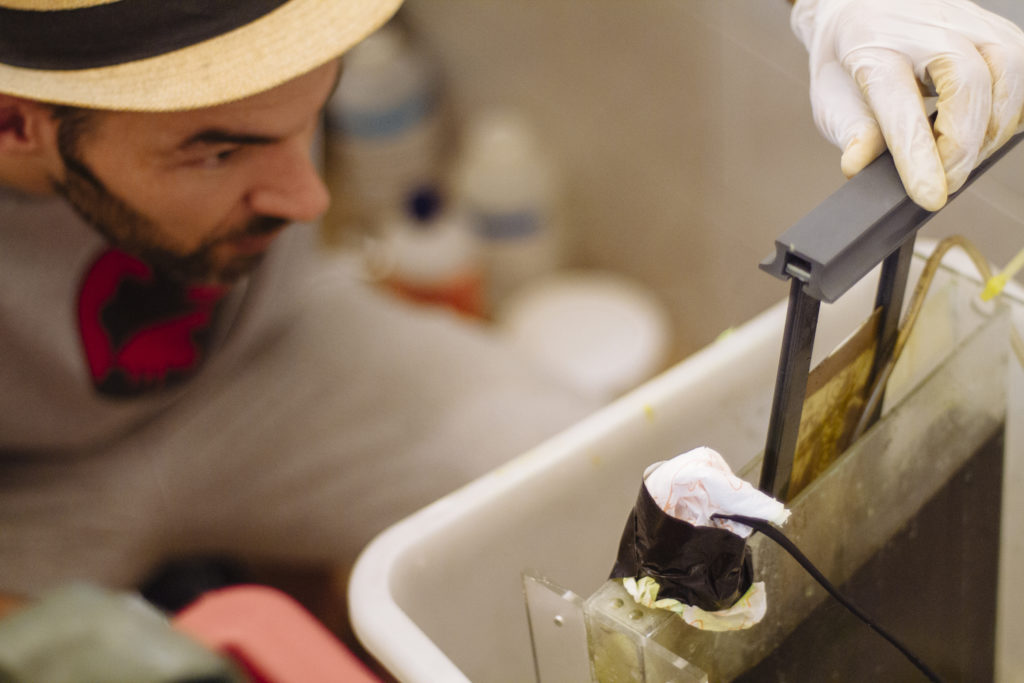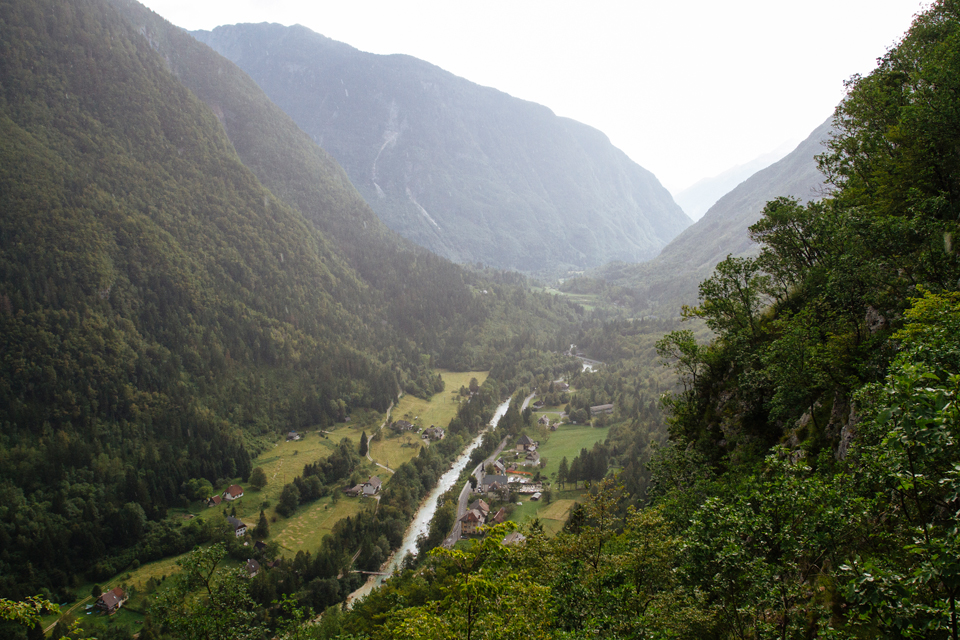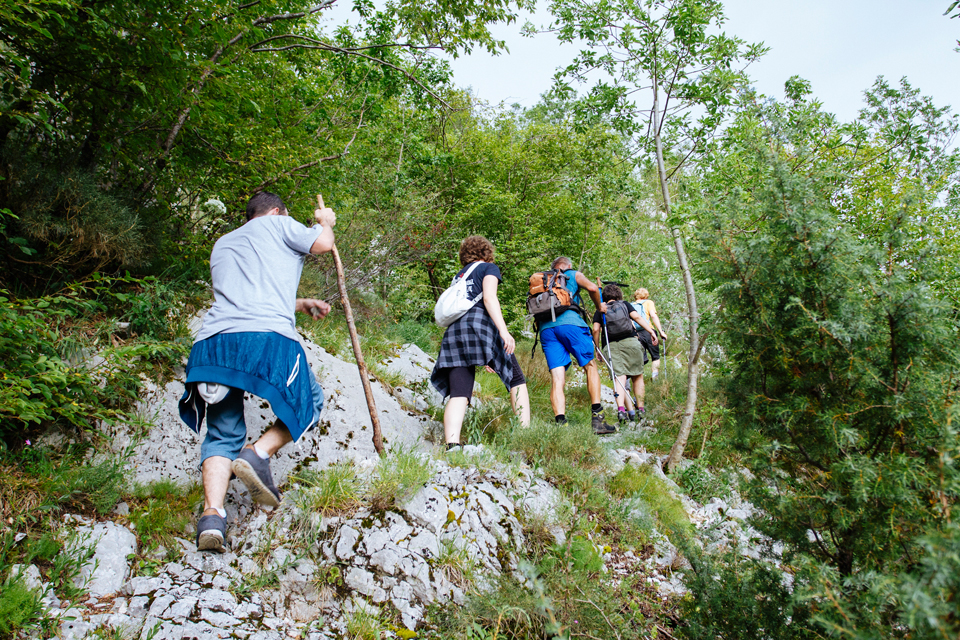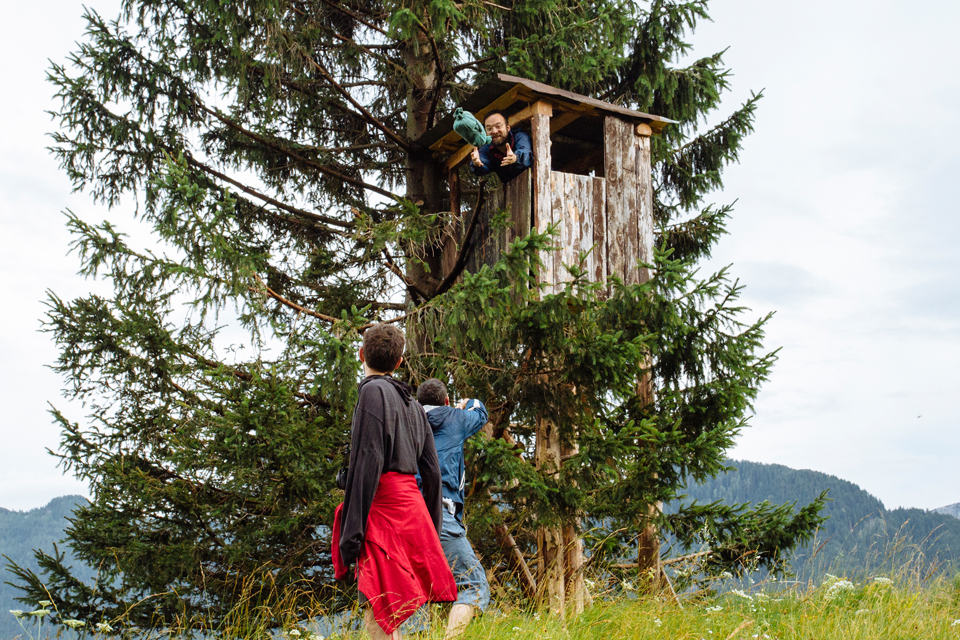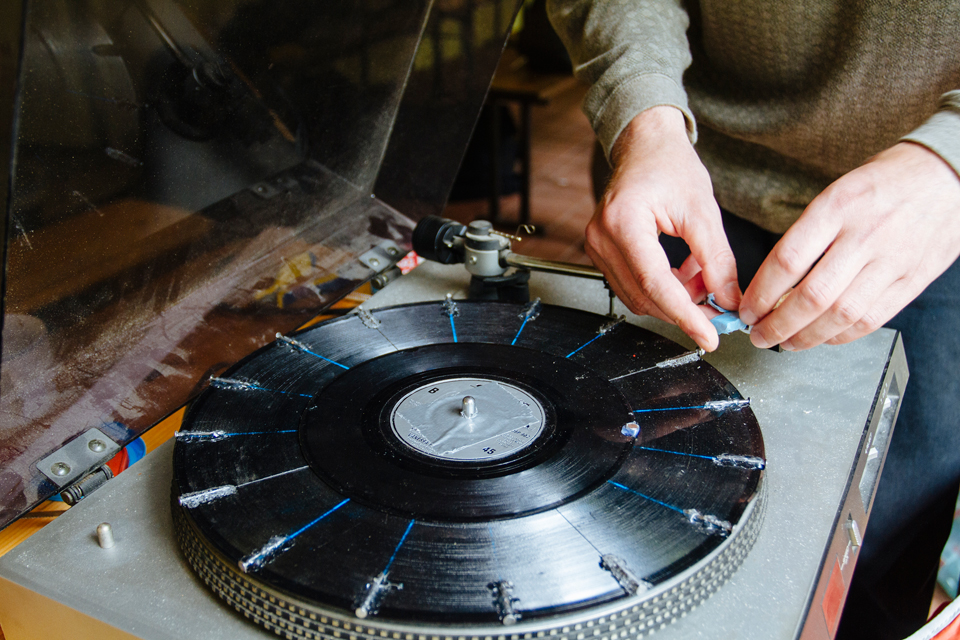The third edition of PIFcamp will take part between 30th of July and 5th of August at Soča village, Trenta. Stay tuned for participants open call and start planning your geeky vacations!
PIFcamp 2016 – Day 6
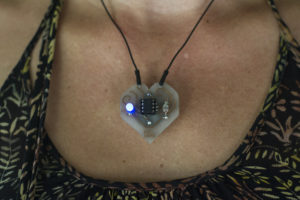 Most had a late start on the last day in Trenta. After another in a series of fine breafasts, which were prepared by Urša and Polona with the occasional help of Ahac, the first visitors arrived to the campsite.
Most had a late start on the last day in Trenta. After another in a series of fine breafasts, which were prepared by Urša and Polona with the occasional help of Ahac, the first visitors arrived to the campsite.
The first to arrive were last year’s participants, friends and acquaintances… Some, for example a group of girls from the newly-established band ČIPKE, didn’t just come to look at the projects, but worked on their own new instruments.
Throught the day some finished their projects, others presented them to the crowd, and once again the earthquake simulation made us cheer!
In the afternoon we started a fire, grilled meats, fooled around, told stories… It was merry.
Dario unveiled his bagpipe and improvised with other PIFmusicians.
The DJ of the evening was Blaž, who managed to entice even the wounded ones to the floor, even if just for a moment or two. His music was accompanied with VJ-jing by Marko Vivoda (Izland) and Alexander Zaklynsky.
Aljoša Abrahamberg came to record some material for his show about conteporary art on the local television, based in Nova Gorica.
Sad, that it is over, we said our goodbyes to Trenta and left her enriched with new knowledge and new friends. A big thanks goes to all who came and made all this unforgetable moments possible, all our sponsors, donators and funders, and above all to Tina and Uroš, who made it happen.
PIFcamp2016 – Day 5
After breakfast all PIFparticipants were obliged to go on a trip towards the Great Gorge (org. Velika korita). A short walk took us to one of those dream-like destinations one never forgets. There some tried kayaking, others jumped from the cliffs and some just sat and enjoyed the hypnotic color of the Soča river.
When we returned back to camp it was time for lunch and desserts. A delicious cake, made a day in advance by Polona, was served as a birthday present to Peter, John and Lio. Tasty treats are definitely one of the features of this year’s camp, the cake was followed by an incredible fruit halva.
The short break proved a great opportunity to do some sports; a frisbee, a kite and a slackline made an appearence.
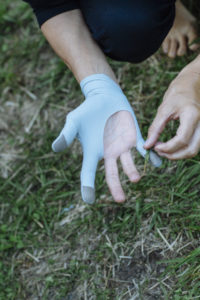 Work on the projects continued. Hannah gave an introduction to e-textiles and also familiarized us with the webpage How to get what you want in order to encourage everybody to make as many electronic parts as possible by ourselves and don’t just buy those made in the factories. This principle enables one to have greater control and flexibility in order to reach desired results. She also made a glove with which she could elude diverse sound for plants by applying different pressure with her fingers.
Work on the projects continued. Hannah gave an introduction to e-textiles and also familiarized us with the webpage How to get what you want in order to encourage everybody to make as many electronic parts as possible by ourselves and don’t just buy those made in the factories. This principle enables one to have greater control and flexibility in order to reach desired results. She also made a glove with which she could elude diverse sound for plants by applying different pressure with her fingers.
Leslie and Paloma continued with their translation of energy into sound. On Open Saturday they plan to transform their bio-laboratory into a sound and light bacteria room, where we can hear and see how algae and bacteria, which were grown on PIFcamp, communicate with us.
Before dinner and just before he left the camp Brgs presented his project. A short jam session then turned into dj-jing, and at some point it seemed all tried to select the most idiotic song they know. But still, dancing continued until sunrise.
Well, we must note the wonderful taste of the local fish that were grilled that evening and made us very happy. But there was also some bitterness, as the week has almost come to its end and with it also PIFcamp.
Open Saturday 2016
The 2nd PIFcamp is coming to an end. But before we leave the world of our Alpine hactivation, we invite you all to join us at Trenta (Soča 25, next to the village church). At the Open Saturday we will present what was done during our week-long camp.
This year we will not keep a formal schedule. We start with various installations, on-site workshops, lectures, presentations, jam sessions at noon.
IMPORTANT: Before you hit the road please check the information about the closures (Vršič and Gorenjska motorways).
See you at 12h.
PIFcamp2016 – Day 4
Another day of early rising for PIFparticipants. We also recieved some morning visitors, among them the crew of Slovenia’s National Television, which plans to cover PIFcamp in a show named Poletna scena (the Summer Scene).
They were able to share our enthusiasm, when the simulation of earthquake took place. The first try though was unsuccessful, but not uneventful: the sound blasts proved too strong for the speakers and instead of a crumbling building we witnessed smoke. The second try was successful, and we can safely claim Soichiro and his team realized their project. And when they repeated the feat with another type of building in the evening, the demolition was accompanied by loud cheering from the crowd.
In the PIFhouse Jože has been making something interesting. He was working with a special kind of Californian algae, as he is interested in their bioluminescence. At the presence of certain mechanical stimuli they emit light. He plans to expose them to differing forces, such as bubbles, sound blasts etc., and capture the resulting patterns with a light-sensitive camera and by prolonged exposure. So check his presentation at PIF’s Open Saturday!
The weather was bad, but that didn’t stop PIFhikers from taking on another hill. Our expert on wild plants and hiking guide took them to the village Skala, which is an important pagan ritual site. The Christians built a chapel on the spot, and one can find peace and quiet there, as soon as he steps through its portal.
Interspecifics made batteries from the samples they collected in our surroundings. As they concluded, the most energy can be harnessed from the soil located near the cheese dairy in Duplje by the Krn lake. The tent, where their laboratory is set, hosted several other workshops as well, among them the estrogen extraction one by Mary Maggic.
Our charmingly confused Frenchman also finally got a chance to work on his project. His Mimosa plants, procured from Ljubljana’s Botanical garden, were left in the dark and had to recover. These fragile, tender trees did become more like themselves in time, and Cedric was able to take some measurements of their response to electrical stimuli during the night. He says it is now time to connect them to circuits and translate their responses into light and sounds.
The project work continues tomorrow, and another tour, this time to Korita, is planned… By the way, Tarock remains the most popular evening activity for those who are trying to relax. And we are getting better and better!
PIFcamp2016 – Day 3
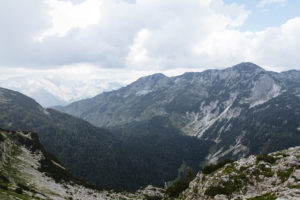 In the early morning hours one fifth of PIF(l)ars rose to hike to the Krn lake, and there wasn’t one who, seeing it, didn’t want to jump right in. But then, who would not want to take a swim and immerse himself in the mixing mirror-like reflections of the mountain scenery and his own body. Well, some did dare to get their feet wet and remained there admiring it for some time, while others chose to try and reach Mount Šmohor.
In the early morning hours one fifth of PIF(l)ars rose to hike to the Krn lake, and there wasn’t one who, seeing it, didn’t want to jump right in. But then, who would not want to take a swim and immerse himself in the mixing mirror-like reflections of the mountain scenery and his own body. Well, some did dare to get their feet wet and remained there admiring it for some time, while others chose to try and reach Mount Šmohor.
Hearing the thunderous sound of an approaching storm they were forced to head back and had a wet, albeit refreshing descent to the beautiful Lepena valley. Naturally, not before they also took various samples for further examination and analysis: some soil, some snow from the glacier, water from the Krn lake. They were trying to find out what kind of microorganisms could be found on different geolocations.
Mary caught a toad on the way up the hill. She took a sample of its urine, and when her misplaced portable laboratory arrives from the airport, she plans to extract the hormones it contains.
Another laboratory though has already been set up in the PIFtent by Paloma and Leslie of the Interspecifics collective, and the PIFparticipants that use it have made a breeding ground for bacteria from agar, soup cubes and sugar.
Throughout the whole day individuals prepared everything needed to print their own personalized circuits, some of which will be formed on the basis of the plants they gathered while hiking.
After yesterday’s drilling, sawing and concrete-making session, the sound simulator of the well-remembered earthquake in Posočje is taking shape.
Some very interesting patterns were weaved on printed circuit boards. We installed a speaker into a hollow tree. Marko Vivoda from the Slovenian visual collective Izland focused on the development of his idea how to “build” a column from soap bubbles that could be filled with smoke and he could project light on to them.
Many projects, like the one from the Slovenian musician Jaka Berger – Brgs, focused on sound. He finished his envisioned optimization of a guitar, built on a drum and a feedback speaker. A highly productive nomad like him, who performs on numerous stages, needs to own a set of instruments, which are innovative, as well as easy to transport.
An oscillator was in the making until late hours, a light and sound sensitive and responsive robot is being built, an obsolete doorbell was hacked, a telephone transformed into a microphone. Work on modular synthesizers continued…
After dinner it was time for Vaclav from BASTL Instruments to familiarize us with his own impressive modular synth.
In short, the projects, tackled with ingenuity and determination, are definitely taking their shape, so they can be presented on Saturday’s open event.
PIFcamp2016 – Day 2
The second day began relatively slowly for most participants. One by one the last remaining hackers arrived, and jumped right into action. Hannah Perner-Wilson, an artist from Austria, who explores the field of e-textiles with various creative approaches for example started sewing pockets for her portable tool storage system right away.
Leslie Garcia and Paloma López from the Mexican artist collective Interspecifics held a demonstration of the EEG experiments for mapping brain activity and a presentation of their plan to build microbiological filters for tracking microorganisms. Of course, all participants took time to focus on their specific projects. Persistent sawing and drilling sounds could be heard in one corner, and one could also help preparing concrete.
Mike Page, who with his playful attitude and fun project definitely left his mark on last year’s PIFcamp, held an etching workshop, and practically everyone was soldering diverse electronic components, which by the end of the week will end up in modular synthesizers.
Part of the PIFgroup chose to step out into the wild and pick edible wild plants; along with the usual specimens like Wild carrots and Wild thyme this time they also brought back plants like Red clover and Mountain cumin. And we have to note: our PIFchefs really do make mind-blowing meals for us geeks, and even desserts aren’t missing or lacking. Tereza, Vid, Bojana and Dario, bravi maestri!
When there is so much work being done and the atmosphere is so cheerful one hardly notices when day turns into night. And since the workday culminated in a music jam, you can imagine the night was quite long. Looking forward to another day!
PIFcamp 2016 has begun
The Soča valley has been overrun by PIF(l)ars (nerds aka PIFparticipants in the local lingo). A weekend of preparations, initial explorations of the beautiful surroundings and introductions is behind us, but the PIFadventure really started only yesterday.
Breakfast was followed by the initial meet-up and the presentations of participants with their projects, and the afternoon was spent in building workstations. The first workshops also took place, among them we tackled hacking more or less complex locks under the guidance of John Maushammer.
A group of PIFparticipants went for a short hiking tour in the direction of the deserted mountain village Lemovje. Heading the group was our familiar PIFcomrade Dario Cortese, with the help of whom we have had the opportunity to glimpse into the bountiful world of edible plants in our surroundings, of course mostly those that are predominantly safe to digest. Some, for example Bellflowers, Wild carrots, Winter savory, Ground elder and Wild thyme, ended up in a truly tasty omelette.
After dinner most focused on workshops; the one that drew the biggest crowd was making PCBs, but some also chose to indulge in various games.
Despite #Changing weathers, we are more than ready to rise to the challenge of a week-long search for creative solutions to stimulating problems.
The Hacktivated Reactive Network by Luka Frelih
The Hacktivated Reactive Network will take on signals from the real world environment of the PIFcamp and its participants, react to them trough live-coded scripts and feed them back to the camp trough screens and kinetic sculptures. The physical input and output devices speaking the OSC protocol will connect trough Noise Make-up Language (NML), a web livecoding bridge, and form a living, pulsating and growing network inhabiting the camp site, its computers and browsers, not to mention the minds and bodies of campers.
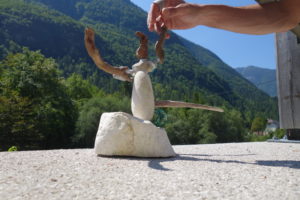 Continuing from last year’s camp, we will be making more input and output modules based on ideas from kinetic sculpture, DIY and kids robotics, modular synthesizers and the beautiful natural surroundings. We will combine humble potentiometers, servo motors and microcontrollers, glue and sticks into abstract expression carriers capable of transforming gestures into numbers and back again. This year we will also try to develop good ways to use other projects sounds as inputs. Perhaps we’ll even manage to give the network a voice and sound. Join in!
Continuing from last year’s camp, we will be making more input and output modules based on ideas from kinetic sculpture, DIY and kids robotics, modular synthesizers and the beautiful natural surroundings. We will combine humble potentiometers, servo motors and microcontrollers, glue and sticks into abstract expression carriers capable of transforming gestures into numbers and back again. This year we will also try to develop good ways to use other projects sounds as inputs. Perhaps we’ll even manage to give the network a voice and sound. Join in!
Lynne Bruning: Intersection of Technology and Craft
